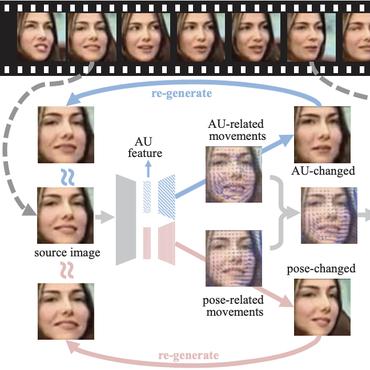Exploring Adversarial Learning for Deep Semi-Supervised Facial Action Unit Recognition
Current works formulate facial action unit (AU) recognition as a supervised learning problem, requiring fully AU-labeled facial images during training. It is challenging if not impossible to provide AU annotations for large numbers of facial images. Fortunately, AUs appear on all facial images, whether manually labeled or not, satisfy the underlying anatomic mechanisms and human behavioral habits. In this paper, we propose a deep semi-supervised framework for facial action unit recognition from partially AU-labeled facial images. Specifically, the proposed deep semi-supervised AU recognition approach consists of a deep recognition network and a discriminator D. The deep recognition network R learns facial representations from large-scale facial images and AU classifiers from limited ground truth AU labels. The discriminator D is introduced to enforce statistical similarity between the AU distribution inherent in ground truth AU labels and the distribution of the predicted AU labels from labeled and unlabeled facial images. The deep recognition network aims to minimize recognition loss from the labeled facial images, to faithfully represent inherent AU distribution for both labeled and unlabeled facial images, and to confuse the discriminator. During training, the deep recognition network R and the discriminator D are optimized alternately. Thus, the inherent AU distributions caused by underlying anatomic mechanisms are leveraged to construct better feature representations and AU classifiers from partially AU-labeled data during training. Experiments on two benchmark databases demonstrate that the proposed approach successfully captures AU distributions through adversarial learning and outperforms state-of-the-art AU recognition work.
PDF Abstract

 DISFA
DISFA